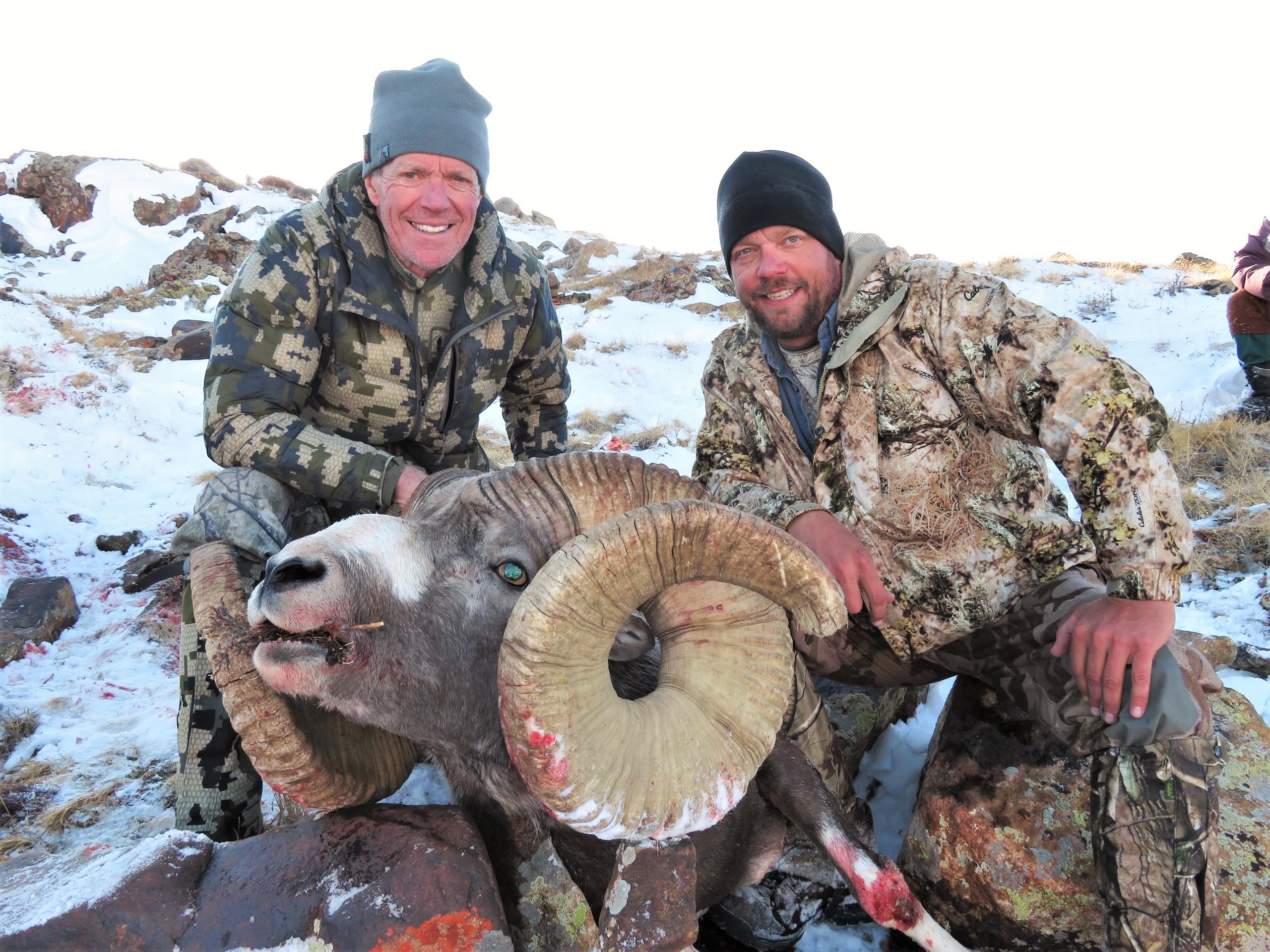ALTAI ARGALI
SEASON: The legal revisions made in 2012 significantly changed the management of nearly all aspects of the trophy hunting system in Mongolia. With the new revisions, hunting season for argali was shifted to a time frame between July 1 – September 30. The revised 2012 system allows only 3 months of hunting which does not include the rutting period in November.
AREA: The Mongolian Altai Mountains constitute a major and central part of the Altai mountain range located at the junction of Central Asia and Siberia. The Mongol Altai has many summits around or even exceeding 13,000 feet (app.4000 meters) above sea level and stretches for some 900 kilometres from the north-western part of the country to the south, through the territories of Bayan-Ulgii and Khovd provinces. This huge, very picturesque piece of land is the home for the largest of the Ovis family, the Altai argali.
The 2012 revisions restricted trophy hunting to specific hunting reserve areas. Before these revisions, hunting companies could lead hunts anywhere, except in protected areas where hunting was never allowed. There are currently about a dosen areas which are awarded Altai argali trophy hunting permits. Since we deal with a number of different outfitters in Mongolia we can offer hunting in most areas.
HOW TO GET THERE: Hunters are required to fly into Ulaanbaatar, UB. They will be met by our representative at the airport and be asssited for the rifle clearance at the customs. This is a 10-15 minute procedure in general. Later on hunters take a domestic flight to either Olgii or Khovd. Hunting areas can be reached from these two cities within a 3-5 hour ride on highway and dirt roads.
ACCOMMODATION: Circular felt tents with a wooden frame which are called “yurts” or “ger” are utilised to accommodate hunters. These well insulated tents are the traditional home for the Mongolian nomads and even in extereme weather they prove to be very comfortable and serviable.
Most yurts are furnished with a wood-burning iron stove in the middle and a comfortable bed. Yurts are ideally suited to Mongolian steppe biomme. The circular shape of yurts makes them able to resist winds from any direction and also allows them to be easily and efficiently heated and cooled. Argali hunting camps are typically consist of a number of these dome-shaped traditional gers.
Almost all hunting camps across Mongolia are equipped with a small generator and electricy is produced by these devices. The power supply and the types of power outlets may differ between countries as there is no international standard. The power supply in Mongolia is 220 volt. There is always a Professional cook in the camp and in some cases they prove to be very good.
WEATHER: The climate in Mongolia is unstable, so from year to year, there may be significant variations in temperature and precipitation. The climate is strongly continental, with long, frigid winters and short, warm summers. The temperature range between winter and summer is definitely wide. Because the country is so far removed from the regulating influence of any oceans, the continental Mongolia climate brings great extremes in weather.
Warm and mostly dry weather can be expected in July with some thunderstorm. July is the hottest month of the year for Mongolians. The day temperature vary between 15°C to 22°C in the mountainous areas. Overall temperature in August is warm enough although later part of the month sees cooler temperatures and more rain or even snow.
By mid September the weather in Mongolia starts to cool but is far more predictable than in Spring time. Days can be sunny but the mountains start getting pretty chilly, even some snow fall can be observed.
ALTITUDE: Mongolia is a vast mountainous plateau sloping from west to east. 80% of the country is above 3,300 feet (1000 meters) altitude. However the average altitude of Mongolia is about 5,180 feet (1,580 metres) above sea level. The highest of all three major mountain ranges in Mongolia is the Altai Mountains, spread from the west to the south-west. The main peaks are concentrated in this region, with an average altitude over 6,500 feet (app 2000 m). Altai ibex hunts take place in this region and majority of hunts take place at 7500-9500 feet (2,300-2,900 mt).
DURATION of the HUNT: Our Altai argali hunting organisations are for 10 days including the 2 days of traveling time. So actual hunting time is 7 days although almost all our hunts end much earlier.
HUNTING METHOD: Most camps and terrain in the Altai argali areas allow for the use of 4-wheel drive vehicles which makes hunting quite easy. Horses may be used also in other areas to move hunters from the sheep camps into the mountains where the aragli graze.
Typical to sheep hunting, extensive glassing is required to initally locate rams and quite often the white rump patches of the sheep are a giveaway to their location. Mountain basins are scanned for bands of sheep that are up and feeding or bedded down until a desired size ram is located.
Sometimes barrel streching shots may be required when there is no way to get any closer. but our local guides and PHs are committed to success and will always try to get as close as possible to ensure a well placed shot.




